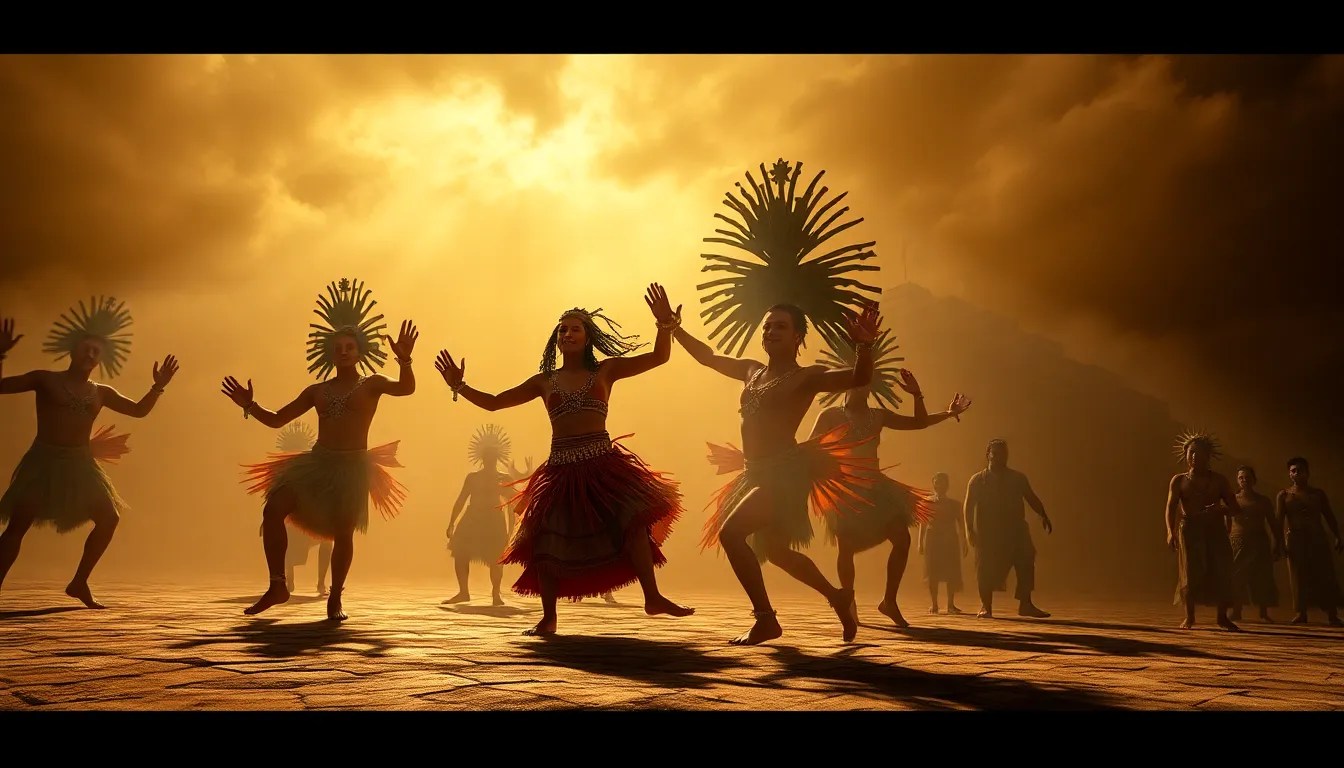The Sacred Steps: How Dance Became a Form of Prayer in Mayan Culture
I. Introduction
Dance is an integral part of Mayan culture, serving as a vital expression of spirituality and community. For the ancient Maya, dance was not merely a form of entertainment, but a profound ritual that connected them to their gods, ancestors, and each other. Through rhythmic movements and ceremonial expressions, the Maya utilized dance as a powerful tool for worship and social cohesion.
II. Historical Context of Mayan Dance
The roots of dance in ancient Maya society can be traced back to their earliest civilizations. Dance was embedded in their daily lives and was often performed during significant events such as religious ceremonies, agricultural festivals, and rites of passage.
Over time, dance practices evolved, influenced by changing cultural dynamics and the merging of different regional traditions. The Postclassic period saw the rise of more structured and complex dance forms, often accompanied by elaborate costumes and masks, indicative of the growing importance of ritual in Mayan life.
III. The Spiritual Significance of Dance
For the Maya, dance served as a vital form of communication with the divine. It was believed that through dance, they could invoke the presence of gods and spirits, seeking their favor and guidance.
Rituals and ceremonies where dance played a pivotal role included:
- Harvest festivals to honor agricultural deities.
- Rites of passage such as initiation ceremonies for young men and women.
- Funerary dances to honor the deceased and ensure safe passage to the afterlife.
These sacred dances were often characterized by specific movements and gestures that held deep symbolic meanings, reinforcing the connection between the physical and spiritual realms.
IV. Types of Sacred Dances
The Mayan culture boasts a rich tapestry of traditional dances, each with its own unique characteristics and significance. Some notable types of sacred dances include:
- El Baile de los Venados (The Dance of the Deer): A ceremonial dance that symbolizes fertility and the connection between humans and nature.
- El Baile del Fuego (The Dance of Fire): A ritual performed to honor the fire gods and to ensure protection and warmth for the community.
- Los Danzantes de la Cruz (The Dancers of the Cross): A dance that reflects the fusion of Christian and indigenous beliefs, performed during religious festivals.
Each of these dances carries profound symbolism, representing themes such as life, death, rebirth, and the cycles of nature.
V. The Role of Music in Mayan Dance
Music is an indispensable element of Mayan dance, enhancing the spiritual experience and guiding the dancers’ movements. Traditional instruments commonly used in Mayan dance include:
- Drums: Providing the rhythmic foundation, they are often made from animal skins and crafted from local woods.
- Marimbas: A wooden percussion instrument that creates melodic sounds, integral to many ceremonial dances.
- Flutes: Played to add a spiritual and melodic layer to the dance.
The relationship between music, rhythm, and movement is essential in Mayan dance, where each beat serves to elevate the dancers’ spiritual expression and deepen their connection to the divine.
VI. Dance as a Community Bonding Activity
Beyond its spiritual significance, dance plays a crucial role in fostering social cohesion and cultural identity within Mayan communities. It serves as a platform for collective expression and unity, often bringing together individuals from various backgrounds.
Community celebrations and festivals featuring dance include:
- Religious holidays where traditional dances are performed to honor deities.
- Seasonal festivals celebrating the harvest, where the community gathers to dance and give thanks.
- Weddings and other significant life events, where dance acts as a communal celebration of joy and togetherness.
Through these communal dances, the Maya reinforce their cultural values and strengthen their bonds, ensuring that traditions are passed down through generations.
VII. Contemporary Interpretations of Mayan Dance
In modern times, the preservation of traditional dances remains a priority for many Maya communities. Efforts to keep these practices alive include:
- Organizing workshops and classes to teach younger generations about traditional dance.
- Participating in cultural festivals that celebrate Mayan heritage, showcasing traditional dances to a broader audience.
- Integrating elements of traditional dance into contemporary art and performance, bridging the past with the present.
The influence of Mayan dance can also be seen in contemporary art forms, where artists draw inspiration from traditional movements and themes, creating innovative works that resonate with both indigenous and global audiences.
VIII. Conclusion
The enduring legacy of dance in Mayan spirituality reflects the deep-rooted connection between movement, music, and the divine. As a form of prayer and expression, dance continues to hold significant importance in Mayan culture, serving as a testament to their rich heritage.
Preserving this cultural practice is essential for future generations, ensuring that the sacred steps of the past continue to inspire and unite the Maya community as they navigate the complexities of modern life.



